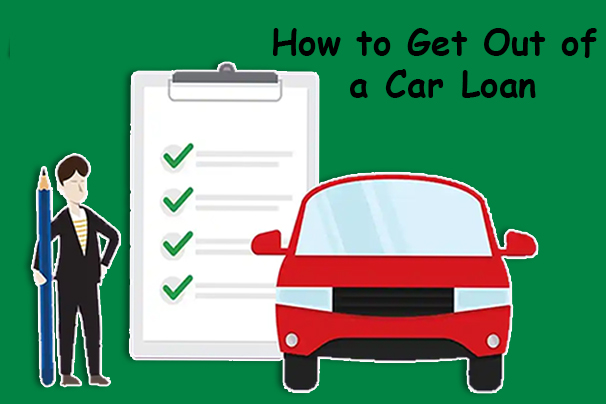How to Get Out of a Car Loan? A car loan is a cost-effective way to acquire a vehicle without sacrificing your savings, although repayment can be challenging. Luckily, there are ways to get out of a car loan you can follow to reduce the pressure it gives. A car loan that was once easy to repay now, all of a sudden, becomes so hard to do.

Although it doesn’t eliminate the loan, refinancing can assist in lowering auto loan payments. It’s a beneficial option for simplifying loan repayment. However, knowing how to get out of a car loan is an important aspect of your financing agreement. Whether through refinancing, renegotiating, or selling the car, there are different ways to get out of a car loan.
Can you get out of a car loan?
There are two primary methods to exit a car loan agreement. These two ways are if the loan term is completed or not or if you default on the loan. Unfortunately, you cannot return or cancel the loan agreement.
Ways on How to Get Out of a Car Loan
Whether you want to get a loan or you have one already and you intend to get out of it, there are a few ways you can follow. Before proceeding with these processes, you need to look carefully if you intend to reduce the hits on your wallet and credit history. The following are some of the steps to follow on how to get out of a car loan.
Renegotiate
Borrowers on good terms with their lenders have the upper hand in this case. To reshape your loan, you need to contact your lender to negotiate a new repayment term and request a modification. This is a good option for borrowers with good credit and repayment history in need of a short time to get back on their feet.
If you plan on renegotiating, it is advisable to contact your lender on time to prevent fallbacks on your loan payment. Most lenders prefer renegotiation with borrowers with a good repayment history. However, before contacting your lender, you need to have in mind a plan on how to fix the situation. Know how much you can afford to pay back on the renegotiated debt as well.
Sell the Car
A car loan can be exited by selling the car purchased with the loan, along with the lien. Because you have yet to gain ownership of the car, you will need to get permission from your lender before selling the car. You will need to first reach out to the lender and inform a representative concerning the selling of the car, then request the car transfer.
Selling your car at a dealership is similar to selling the car, but you may receive less for your vehicle. If you’re in the market for a car, consider selling it to a family member or friend, provided it’s approved by your lender.
Voluntary Repossession
Considering giving the car to your lender as your complete final expedient is another way. To proceed smoothly, it is crucial to consult your lender to determine if your loan will be covered when you voluntarily surrender your vehicle.
Turning over a car saves lenders from repossession costs and hassles, potentially allowing you to qualify for a more favorable payoff amount. Voluntary repossession saves you from some financial costs, such as prepayment fees and car resale fees. Unfortunately, this step may affect your credit and cause financial difficulties in the future.
Refinance
Refinancing is ideal for borrowers who qualify for more affordable car loan repayments, as it helps save money on monthly repayments. Good-credit borrowers are frequently more likely to be eligible for refinances. This method helps you reduce your monthly repayment through lower interest rates.
If you have a longer repayment term, refinancing helps you reduce your monthly payment but increases your interest rates. Refinancing with bad credit negatively impacts your credit score and may be challenging for those lacking your repayment.
Pay Off the Car Loan
Completely paying off a car loan is another option to exit a car loan, although it may not always be feasible. You can manage financial stress by walking away from the loan, but a more effective method is to pay off the loan with a substantial sum of money. Before carrying out this process, ensure that you are aware of how much you owe on the loan. This is primarily the sum of your interest rates and loan balance.



